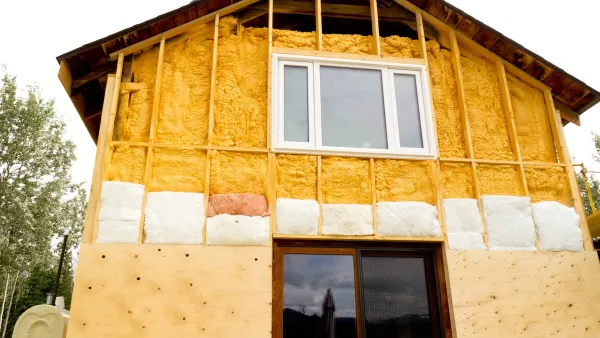Whether or not U.S. housing is affordable comes down not only to cost but also to wages. Both vary dramatically from city to city.
Housing affordability in the United States shows extreme variety. In the Midwest, where many homes are losing value or gaining it slowly, it can be hard to build wealth through home equity, but in the popular cities of the west coast, housing is out of reach for many. "In the median U.S. neighborhood, house prices are approximately three times annual household income," Cecile Murray and Jenny Schuetz write for Brookings. Still there's plenty of variance.
"Almost all Southern and Midwestern households live in affordable neighborhoods, while large shares of Northeastern and Western neighborhoods have price-income ratios that would stretch middle-income family budgets," Murray and Schuetz write.
This gap comes with it's own suite of problems. In some areas where homes have lost value or been flat, home owners see little reason to maintain homes that aren't very valuable. "Neighborhoods with persistently low home price-income ratios raise concerns about the ability of families to build wealth because home equity is the main source of wealth for middle-income families," Murray and Schuetz write. Meanwhile, cities like Los Angeles and San Francisco struggle with homelessness and a lack of affordable housing to buy or rent.
FULL STORY: Housing in the U.S. is too expensive, too cheap, and just right. It depends on where you live.

National Parks Layoffs Will Cause Communities to Lose Billions
Thousands of essential park workers were laid off this week, just before the busy spring break season.

Retro-silient?: America’s First “Eco-burb,” The Woodlands Turns 50
A master-planned community north of Houston offers lessons on green infrastructure and resilient design, but falls short of its founder’s lofty affordability and walkability goals.

Delivering for America Plan Will Downgrade Mail Service in at Least 49.5 Percent of Zip Codes
Republican and Democrat lawmakers criticize the plan for its disproportionate negative impact on rural communities.

Test News Post 1
This is a summary

Test News Headline 46
Test for the image on the front page.

Balancing Bombs and Butterflies: How the National Guard Protects a Rare Species
The National Guard at Fort Indiantown Gap uses GIS technology and land management strategies to balance military training with conservation efforts, ensuring the survival of the rare eastern regal fritillary butterfly.
Urban Design for Planners 1: Software Tools
This six-course series explores essential urban design concepts using open source software and equips planners with the tools they need to participate fully in the urban design process.
Planning for Universal Design
Learn the tools for implementing Universal Design in planning regulations.
EMC Planning Group, Inc.
Planetizen
Planetizen
Mpact (formerly Rail~Volution)
Great Falls Development Authority, Inc.
HUDs Office of Policy Development and Research
NYU Wagner Graduate School of Public Service





























